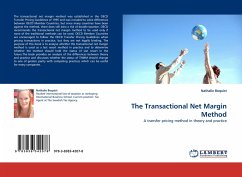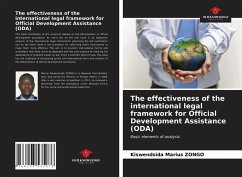
The Transactional Net Margin Method
A transfer pricing method in theory and practice
Versandkostenfrei!
Versandfertig in 6-10 Tagen
32,99 €
inkl. MwSt.

PAYBACK Punkte
16 °P sammeln!
The transactional net margin method was established in the OECD Transfer Pricing Guidelines of 1995 and was included to solve differences between OECD Member Countries, but since many countries have been against the method, there does still exist a risk of double taxation. OECD recommends the transactional net margin method to be used only if none of the traditional methods can be used. OECD Member Countries are encouraged to follow the OECD Transfer Pricing Guidelines when pricing transactions in practice, but they are not legally binding. The purpose of this book is to analyse whether the tr...
The transactional net margin method was established in the OECD Transfer Pricing Guidelines of 1995 and was included to solve differences between OECD Member Countries, but since many countries have been against the method, there does still exist a risk of double taxation. OECD recommends the transactional net margin method to be used only if none of the traditional methods can be used. OECD Member Countries are encouraged to follow the OECD Transfer Pricing Guidelines when pricing transactions in practice, but they are not legally binding. The purpose of this book is to analyse whether the transactional net margin method is used as a last resort method in practice and to determine whether the method should hold the status of last resort in the future.The book provides an analysis of the differences between theory and practice and discusses whether the status of TNMM should change to one of greater parity with competing practices which can be useful for many companies.












